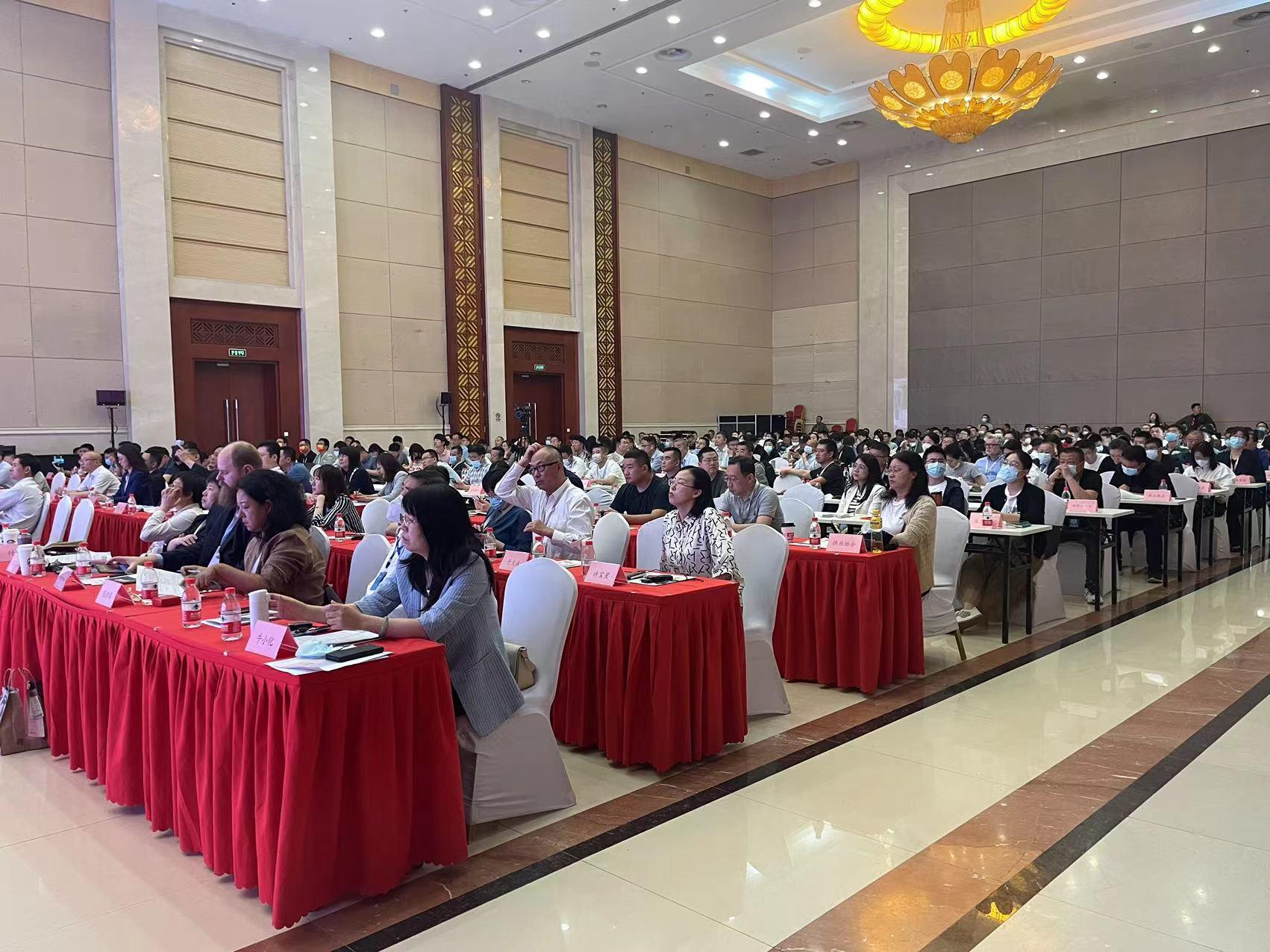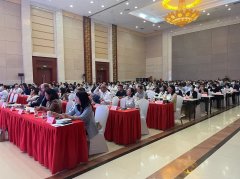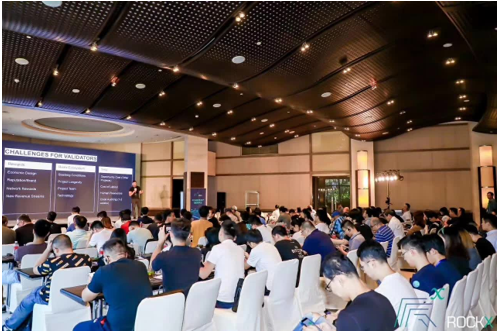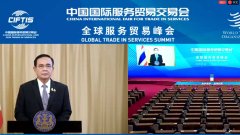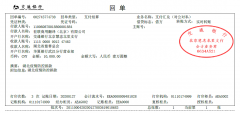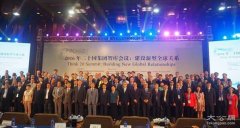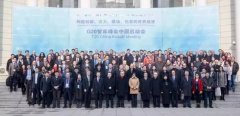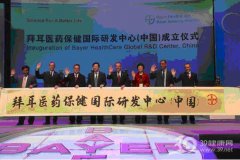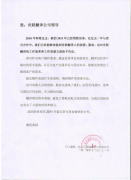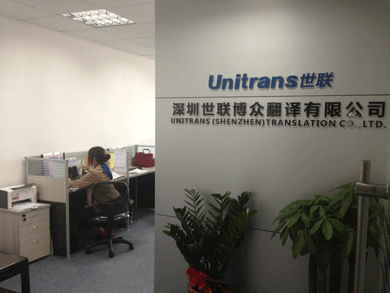世联翻译公司完成咖啡专业领域英中翻译
时间:2021-01-08 08:50 来源:未知 作者:dongli 点击:次
世联翻译公司完成咖啡专业领域英中翻译
Using marketing analytics to drive superior growth善用营销分析学促进销售更快增长 Companies have so many analytical options at their disposal that they often become paralyzed, defaulting to just one approach.公司可用的分析工具太多, 这令他们常常变得犹豫不决, 最后默认使用某一种分析方法。 June 2014 | by Rishi Bhandari, Marc Singer, and Hiek van der Scheer 2014年6月号,Rishi Bhandari, Marc Singer, and Hiek van der Scheer合写。 There’s no question that the development of better analytical tools and approaches in recent years has given business leaders significant new decision-making firepower. Yet while advanced analytics provide the ability to increase growth and marketing return on investment (MROI), organizations seem almost paralyzed by the choices on offer. As a result, business leaders tend to rely on just one planning and performance-management approach. They quickly find that even the most advanced single methodology has limits. 毫无疑问,近年来开发出来的性能更加卓越的分析工具和方法,为企业领导人进行决策提供了全新的动力。然而尽管高级分析学可以为促进销售增长和提高营销投资回报率提供帮助,有许多企业因为选择过多,几乎有点无所适从。结果,企业领导人倾向于只使用一套计划和经营管理方法。他们很快意识到,单一方法就算是再先进,也有其自身的不足。 The diverse activities and audiences that marketing dollars typically support and the variety of investment time horizons call for a more sophisticated approach. In our experience, the best way for business leaders to improve marketing effectiveness is to integrate MROI options in a way that takes advantage of the best assets of each. The benefits can be enormous: our review of more than 400 diverse client engagements from the past eight years, across industries and regions, found that an integrated analytics approach can free up some 15 to 20 percent of marketing spending. Worldwide, that equates to as much as $200 billion that can be reinvested by companies or drop straight to the bottom line. 营销活动的多样化、营销费用通常支持的受众以及投资时间界限的多样化要求使用更加精密的方法。根据我们的经验,企业领导人提升营销效益的最佳途径是将营销投资回报率各种方案以一种兼顾各种资产最大优点的方式进行整合。这么做效果卓著:我们通过对过去8年来遍布各地、横跨各行业的400多位各种各样的客户案例总结分析,发现整合分析方法可以节省15%到20%的营销费用。从全世界范围来看,这相当于2000亿美元,公司可以用来进行重新投资或者直接将营销费用压到最低。 Here’s one example. A property-and-casualty insurance company in the United States increased marketing productivity by more than 15 percent each year from 2009 to 2012. The company was able to keep marketing spending flat over this period, even as related spending across the industry grew by 62 percent. As the chief marketing officer put it, “Marketing analytics have allowed us to make every decision we made before, better.” 我们来看一个例子。美国的一家财产和意外保险公司,从2009年到2012年,营销效率以每年超过15%的速度增长。这种情况下,该公司还能够在这段时间内将营销费用持平,而行业内相关营销费用增长了62%。该公司首席营销经理说:“营销分析法使我们做的每个决定都比以前更好。” Anchoring analytics to strategy 将分析学融入战略 A company’s overarching strategy should ground its choice of analytical options. Without a strategy anchor, we find companies often allocate marketing dollars based largely on the previous year's budget or on what business line or product fared well in recent quarters. Those approaches can devolve into “beauty contests” that reward the coolest proposal or the department that shouts the loudest rather than the area that most needs to grow or defend its current position. 一个公司的整体战略应该建立在对各种分析方案的选择上。我们发现,如果没有一个战略定位,许多公司经常在很大程度上会依据上一年度的财政预算或最近几个季度哪些业务线或产品表现不俗来分配营销费用。这些方法可能会退化成“选美赛”—奖励最酷的方案或者嚷嚷得最厉害的部门,而不是分配给那些最需要成长或者保持当前位置的部门。 A more useful approach measures proposals based on their strategic return, economic value, and payback window. Evaluating options using such scores provides a consistent lens for comparison, and these measurements can be combined with preconditions such as baseline spending, thresholds for certain media, and prior commitments. 一个更为有用的方法基于战略回报、经济价值和回报期限等方面对方案进行评估。评估方案采用这种分数提供了一个持续的图景用以作比较,而且这些评估可以和一些前提条件如基本费用,特定媒体的门槛,优先承诺等联合使用。 The other prerequisite in shaping an effective MROI portfolio is understanding your target consumers’ buying behavior. That behavior has changed so radically in the past five years that old ways of thinking about the consumer—such as the marketing “funnel”—generally don’t apply. 要形成一个有效的营销投资回报率组合,另一项前提是了解目标消费者的购买行为。在过去的5年里消费者购买行为发生了巨大的变化,那些考虑消费者的如营销“漏斗”的老路子,已经基本上行不通了。Where the funnel approach prioritized generating as much brand awareness as possible, the consumer decision journey recognizes that the buying process is more dynamic and that consumer behavior is subject to many different moments of influence.1 1.See David Court et al., “The consumer decision journey,” McKinsey Quarterly, June 2009. For insight into the impact of digitization, see David Edelman, Kelly Ungerman, and Edwin van Bommel, “Digitizing the consumer decision journey,” June 2014. (A sidebar, “Five questions for maximizing MROI,” highlights additional considerations.) 营销“漏斗”法重点放在树立品牌意识,而消费者决策过程分析法则承认消费者购买过程更加灵活多变,消费者行为受到许多不同环节的影响。(1参见David Court 《消费者决策过程》,麦肯锡期刊,2009年6月。要了解更多数字化的影响,参见David Edelman, Kelly Ungerman, and Edwin van Bommel,《消费者决策过程数字化》,2014年6月)(补充:《营销投资回报率最大化的五个问题》,强调其他一些要考虑的方面。) One home-appliance company, for example, typically spent a large portion of its marketing budget on print, television, and display advertising to get into the consideration set of its target consumers. Yet analysis of the consumer decision journey showed that most people looking for home appliances browsed retailers’ websites—and fewer than 9 percent visited the manufacturer’s own site. When the company shifted spending away from general advertising to distributor website content, it gained 21 percent in e-commerce sales. 例如:一家家用电器公司,通常会将其营销预算的很大一部分花在印刷、电视和广告展示以引起特定目标消费者的关注。而对消费者决策过程的分析表明,大多数消费者通过浏览零售商的网站寻找家用电器,只有不到9%的人浏览生产商自身的网站。当公司将营销费用从一般广告转移到分销商内容网站上,公司电子商务销售额增加了21%。 Making better decisions 更好地决策 While new sources of data have improved the science of marketing analytics, “art” retains an important role; business judgment is needed to challenge or validate approaches, but creativity is necessary to develop new ways of using data or to identify new opportunities for unlocking data. These “soft” skills are particularly useful because data availability and quality can run the gamut. For instance, while online data allow “audience reached” to be measured in great detail, other consumer data are often highly aggregated and difficult to access. But such challenges shouldn’t impede the use of data for better decision making, provided teams follow three simple steps. 新的数据来源改善了营销分析学的科学性,但分析学的“艺术性”仍起着重要作用;商业判断需要勇于挑战或者验证各种方法, 但创新能力对开发使用数据新方法或使用解锁数据确定新的机会非常重要。这些“软”技能特别有用,因为数据可用性和质量可以覆盖全过程。比如,线上数据允许对 “到达受众”进行详细评估,别的消费者数据经常是高度集成并难以进入。但假如团队遵循下面三个简单步骤,这些挑战就不会影响数据的使用,从而做出更好的决策。 1. Identify the best analytical approaches 确定最佳的分析方法 To establish the right marketing mix, organizations need to evaluate the pros and cons of each of the many available tools and methods to determine which best support their strategy. When it comes to nondirect marketing, the prevailing choices include the following: 要建立正确的营销组合,企业需要评估许多可用工具和方法的利弊以确定哪些才能最有力地支持他们的战略。当涉及到非直接营销,主流的选择包含以下方面:
整合各种能力以获得深刻见解 Although some companies rely on just one analytical technique, the greatest returns come when MROI tools are used in concert. An integrated approach, which includes pulling in direct-response data and insights, reduces the biases inherent in any one MROI method and provides business leaders with the flexibility to shift the budget toward activities that produce the most bang for their buck. 虽然有一些公司只依赖于某一种分析方法,但是最好的回报还是来自对营销投资回报率方法的整合使用。作为一种综合的分析方法,包括了:可以拉动直接反应的数据和见解、可以减小任何一种营销投资回报率方法偏见性、能令企业领导人灵活决策将预算投向可产生最大效益的营销活动。 So how do these techniques work together? A company may find, for instance, that TV, digital, print, and radio make up about 80 percent of its marketing spending. Since those activities generate audience-measurement data that can be tracked longitudinally, it makes sense to use MMM. But digital spending can be refined further using attribution modeling to pinpoint the activities within broad categories—such as search or display—that are likely to generate the most conversion. The company could then use heuristics analysis such as RCQ to monitor the remaining 20 percent of its spending, which may go toward sponsorships and out-of-home advertising to capture the company’s non-TV-watching target audience. 怎样才能使这些方法协同工作呢?或许公司会觉得,例如电视广告、数字化广告、印刷广告以及广播广告加起来差不多占了整个营销费用的80%。既然这些活动生成的受众评估数据可以纵向跟踪,使用营销组合模型方法就变得可行。但是通过使用归因模型在大范围类别里精确定位---比如搜索或展示等最有可能产生销售转化的活动,数字营销费用可以得到进一步精确化。然后公司可以使用探索式分析法,如RCQ(范围、成本、质量)法来监控剩余20 %的支出,这些支出可能会转向赞助活动及户外广告,以便为公司获取不看电视的目标受众。 Developing common response curves across analytical techniques helps marketers put the values of different approaches on common footing. The organization can then use a decision-support tool to integrate the results, allowing business leaders to track and share marketing performance on a near-real-time basis and course correct as needed. 跨分析技术开发普通反应曲线帮助营销人员把不同方法的价值建立在普通立脚点上。企业可以用一个决策支持工具整合结果,让企业领导人可以跟踪并分享基于接近实时销售的营销业绩并可根据需要改变进程。 An international power company, for example, used RCQ analysis to adjust its out-of-home and sponsorship mix, efforts that increased reach within its target audience and raised the efficiency of marketing communications by 10 to 15 percent. 又例如,一个国际电力公司,采用RCQ分析法调整了公司的户外广告和赞助组合投资方案,这一努力使公司扩大了目标受众的范围并将营销传播的效率从10%提高到15%。The company then turned to MMM to get a more granular MROI assessment of its spending on digital versus traditional media. It found that while each €1 million invested online generated 1,300 new consumers, the same investment in TV, print, and radio helped the company retain 4,300 consumers (40 percent of whom were likely to stay loyal to the brand over the long term). Those insights helped the company understand where to best focus its spending and messaging for both attracting new customers and keeping existing ones. 然后公司转向营销组合模型方法以得到对数字媒体与传统媒体对照的支出更细化的营销投资回报率评估。公司发现每投入在线广告100万产生1300个新客户,而100万投入到电视,印刷和广播则帮助公司留住4300个消费者(有40%左右的人在很长时间里会忠于公司品牌)。这些见解让公司知道应该将费用和信息聚焦何处,以吸引新客户并留住老客户。In fine-tuning the mix, it can be tempting to allocate money to short-term initiatives that generate high ROI. That bias is fed by the fact that so much data comes from consumers engaging in short-term behavior, such as signing up for brand-related news and promotions on a smartphone or buying a product on sale. That short-term effect typically comprises 10 to 20 percent of total sales, while the brand, a longer-term asset, accounts for the rest. Businesses need to ensure their mix models are capable of examining marketing effectiveness over both time horizons.在细调组合方案时,公司很有可能经不住高回报的诱惑而把钱投入到短期活动中去。这种倾向是有事实依据的,有许多来自消费者的短期行为的数据可以证明,例如为品牌相关消息或智能手机促销注册登记或购买打折产品。短期效应通常占到总销售额的10-20%,而品牌作为长期资产,则占到总销售额的80-90%。企业需要确定组合模型能够基于时间和范围两个纬度对营销效果进行检测。 One consumer food brand almost fell into this short-term trap. It launched a campaign using Facebook advertising, contests, photo-sharing incentives, and shared-shopping-list apps. At a fraction of the cost, the approach delivered sales results similar to those generated by more traditional marketing, which included heavy TV and significant print advertising. Not surprisingly, the brand considered shifting spending from TV and print advertising to social-media channels. Yet when long-term effects were included in its calculations, the impact of its digital efforts was cut by half. If the company had proceeded with significantly cutting its TV spending, as traditional MMM suggested, it would have reduced the net present value of the brand’s profit. 一个食物消费品牌几乎掉进了这种短期陷阱。该品牌通过脸谱网的广告、竞赛、相片分享激励机制和共享购物清单应用软件发起了一场营销活动。在成本这个环节,这个方法得到与较为传统的营销方法产生的基本一致的销售结果,传统的营销方法包括密集的电视广告、大量的印刷广告。该品牌考虑将营销费用从电视和印刷广告转移到社交媒体渠道上来,这毫不奇怪。然而将长期效应一起考量时,数字化努力的效果就会减半。正如传统的营销组合模型方式所显示,如果公司大量地缩减电视广告费用,该公司的净收益价值就会降低。 3. Put the analytical approach at the heart of the organization 把分析方法置于企业的核心地位 It’s not uncommon for teams to outsource analysis or throw it over the wall to an internal analytics group. When the findings come back, however, those same teams may be reluctant to implement them because they don’t fully understand or trust the numbers. 对许多团队来说,进行数据分析外包或者将这一工作扔给内部的分析团队,是很平常的事情。然而,当分析结果返回公司后,这些营销团队可能不愿意执行,因为他们不能够充分理解或信任这些数据。 To solve that problem, marketers must work closely with data scientists, marketing researchers, and digital analysts to question assumptions, formulate hypotheses, and fine-tune the math. Companies also need to cultivate “translators,” individuals who both understand the analytics and speak the language of business. One financial-services company, for instance, set up councils within its marketing function to bring the creative and analytical halves of the department together. The councils helped analysts understand the business goals and helped creatives understand how analysis could inform marketing programs. We’ve seen such collaboration cut the duration of MROI efforts in half. 要解决这个问题,营销人员必须和数据专家紧密工作,数据分析师要质疑旧假设,提出新假设,并对数学模型进行微调。公司需要培养既懂得分析学又懂得商务的“翻译人员”。例如,一个金融服务公司,在营销功能框架下设立了委员会以便将创意部门和分析部门融合到一起。委员会帮助分析师理解商业目标,又帮助创意人员理解分析方法怎么激活营销项目。我们已见过这样的组合,将营销投资回报率分析过程缩短了一半时间。 Speed and agility are also important. Insights from the consumer decision journey and the marketing-mix allocation should inform the tactical media mix. Actual results should be compared with target figures as they come in, with the mix and budget adjusted accordingly. Attribution modeling can be especially helpful with in-process campaign changes, since digital spending can be modified on very short notice. Our research shows that the best-performing organizations can reallocate as much as 80 percent of their digital-marketing budget during a campaign. 速度与灵活性也非常重要。来自消费者决策过程和混合营销分配的深刻见解可以激活战术媒体组合。随着实际结果数据的进入,应当将实际结果数据和目标数字相比较,并对组合制和预算进行相应调整。由于数字化营销费用能够在得到短期通知后进行调整,归因建模对处理进程内的活动变化特别有用。我们的研究表明,最佳经营公司能够对营销活动中80%的数字营销预算进行重新分配。 The pressure on business leaders to demonstrate return on investment from a diverse portfolio of marketing programs is only increasing. The data to make smarter decisions are available, as are the analytical tools. We believe that taking an integrated analytics approach is the key to uncovering meaningful insights and driving above-market growth for brands. 企业领导者通过多种组合的营销计划来证明投资回报率的压力有增无减。要用数据做出更明智的决策,就应当使用分析工具。我们相信采用整合分析方法发掘非凡见解和推动品牌超越营销增长的关键所在。 For more from McKinsey on the topic of marketing and sales, visit the McKinsey on Marketing & Sales website. 要从麦肯锡了解更多营销和销售主题,请访问麦肯锡营销和销售网站。 About the authors 作者介绍 Rishi Bhandari is a senior expert in McKinsey’s Chicago office, Marc Singer is a director in the San Francisco office, and Hiek van der Scheer is a consultant in the Amsterdam office. Rishi Bhandari 是麦肯锡芝加哥办公室的高级专家,Marc Singer是旧金山办公室的一位董事,Hiek van der Scheer是阿姆斯特丹办公室的一位咨询顾问。 世联翻译-让世界自由沟通!专业的全球语言翻译供应商,上海翻译公司专业品牌。丝路沿线56种语言一站式翻译与技术解决方案,专业英语翻译、日语翻译等文档翻译、同传口译、视频翻译、出国外派服务,加速您的全球交付。 世联翻译公司在北京、上海、深圳等国际交往城市设有翻译基地,业务覆盖全国城市。每天有近百万字节的信息和贸易通过世联走向全球!积累了大量政商用户数据,翻译人才库数据,多语种语料库大数据。世联品牌和服务品质已得到政务防务和国际组织、跨国公司和大中型企业等近万用户的认可。 |





